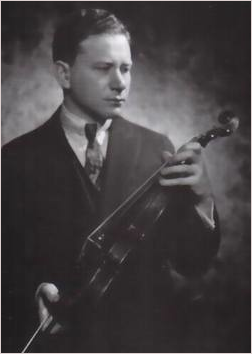
When I was a student in Philadelphia, Pa., I was a member of Max Aronoff’s Technique Class. The class met weekly in the Concert Hall and consisted of advanced string students and a few professional orchestra musicians who were Max’s ex- students (and whom the rest of us students idolized).
Whatever our status, Max’s penetrating analysis of our individual playing was a given. He was great at remembering, organizing and confronting any technical difficulties with the greatest patience and persistence. Because his teachings were structured and often repeated in the same form, his students could not help but remember them. Besides, there was always the thought that one might suddenly be called to demonstrate an exercise to the rest of the class …
Max had a number of ‘diets’ that were not at all related to food. These diets were special courses of action which one diligently applied to gain mastery over a technical challenge.
One of the first ‘diets’ that I learned was for left hand agility and 4th finger mastery. Once learned, the 3 patterns are to be combined and repeated up the C/G (G/D) strings in ascending positions until one reaches the octave of the first note.





Now try linking the patterns together ………



Not only are these exercises great for the left hand but the bow is practicing smooth string crossing.
This is a demanding ‘diet’ but the results are well worth the discipline.
For more practice tips,
visit Online Violin Lessons
file://localhost/Users/viviannewaters/Desktop/Screen%20shot%202011-12-03%20at%207.18.24%20PM.png







